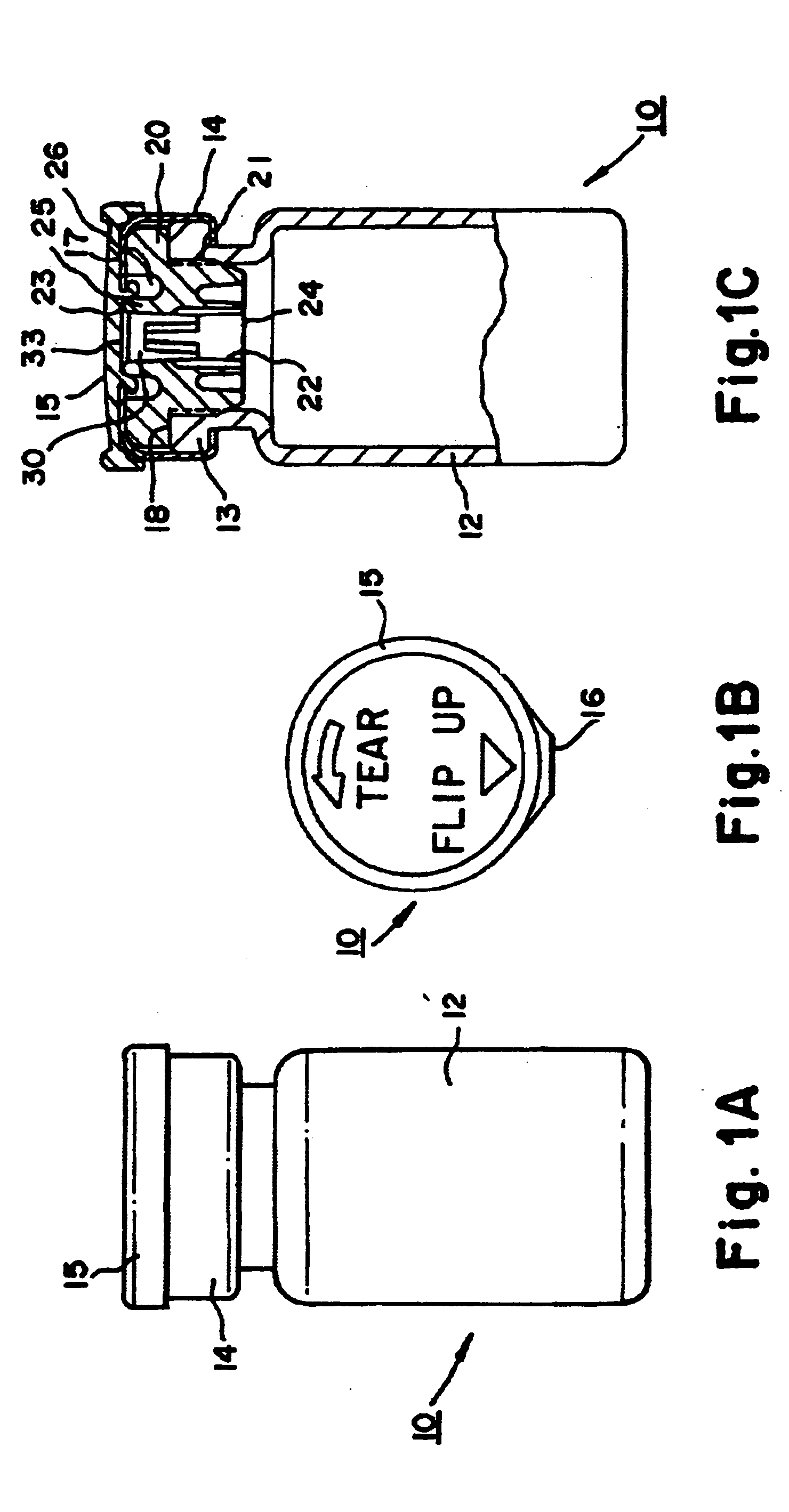Swabbable needleless vial access
a technology of vial access and swab, which is applied in the field of material transfer coupling systems, can solve the problems of affecting the safety of patients, so as to reduce the risk of contamination, reduce the risk of damage to the injection site, and ensure the effect of resealability
- Summary
- Abstract
- Description
- Claims
- Application Information
AI Technical Summary
Benefits of technology
Problems solved by technology
Method used
Image
Examples
Embodiment Construction
[0094] As shown in the Figures, there are three basic components for the needleless transfer of medication between a container 10 and a syringe. Besides the syringe, which may be needleless, the invention makes use of a stopper 20 and a plug 30 in the stopper 20.
[0095] The syringe, such as the syringe 40 of FIG. 4A, may be of any commercially available type, including the Luer-lock type shown in the Figures.
[0096] It is the combination of the stopper 20 and the plug 30 that permits the needleless transfer of medication with reduced danger of pathogen and other contamination.
[0097] As shown in FIG. 1A, the medicinal container 10 includes a bottle 12 with a top mouth portion 13 encircled by a flange 14 and sealed by a cover 15 that is instructed in FIG. 1B to be “flipped up” at a corner 16 and torn to expose the flange rim 17 of FIG. 1C, which shows the stopper 20 in snug fit within mouth portion 13 of the bottle 12. The stopper 20 may include a rib 21, or the like, to improve the ...
PUM
 Login to View More
Login to View More Abstract
Description
Claims
Application Information
 Login to View More
Login to View More - R&D
- Intellectual Property
- Life Sciences
- Materials
- Tech Scout
- Unparalleled Data Quality
- Higher Quality Content
- 60% Fewer Hallucinations
Browse by: Latest US Patents, China's latest patents, Technical Efficacy Thesaurus, Application Domain, Technology Topic, Popular Technical Reports.
© 2025 PatSnap. All rights reserved.Legal|Privacy policy|Modern Slavery Act Transparency Statement|Sitemap|About US| Contact US: help@patsnap.com



